Helicopters brought in to help with Peak District railway tunnel repairs in rare move
and live on Freeview channel 276
For those travelling through the Cowburn Tunnel the recent work would have gone unnoticed.
But for the past few weeks up on the surface there has been a flurry of activity around the ventilation shaft while essential repairs take place.
Advertisement
Hide AdAdvertisement
Hide AdThe tunnel between Edale and Chinley goes underneath key peaks near Kinder Scout and Mam Tor in the Peak District National Park.
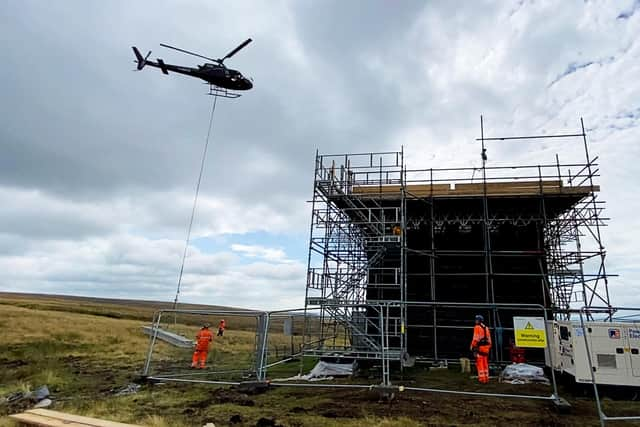

However, being in the middle of the Hope Valley has made the project anything but routine.
As the tunnel is in such a rural location an extreme solution was needed to help the engineers work safely.
So Network Rail, which owns the tunnel, went with the unusual move of using helicopters to assist with the project.
Advertisement
Hide AdAdvertisement
Hide AdPilots were drafted in to transport vital materials and components for work on the tunnel’s ventilation shaft.
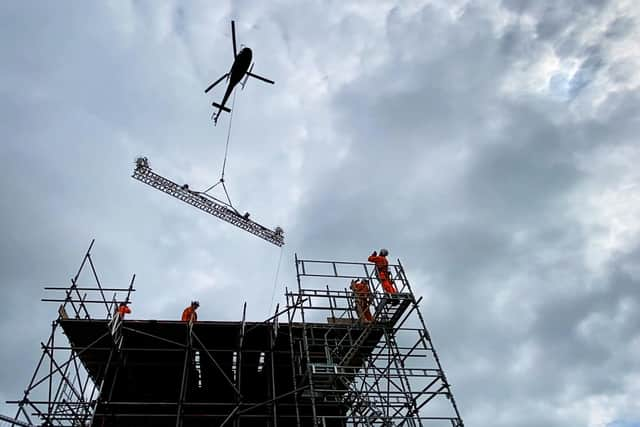

Dennis McGonnell, Network Rail works delivery manager, said: “We work on a lot of structures in remote locations but working in a tunnel this deep and using helicopters to get materials to site is rare.
"It makes you realise what an amazing feat of engineering building this tunnel and ventilation shaft was all that time ago without the modern machinery we have today.”
For nearly 130 years, as well as providing air to the tunnel more than 250 metres below, the ventilation shaft has also inadvertently acted like a huge drainpipe.
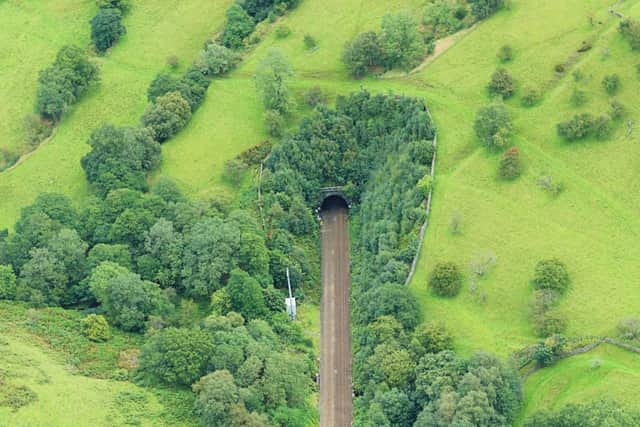

Advertisement
Hide AdAdvertisement
Hide AdWhen rain falls on the land above it seeps through the soil before making its way through the ventilation shaft’s brickwork, cascading like a massive shower head into the tunnel and tracks below.
To solve this, Network Rail engineers have installed a sophisticated system of drainage pipes to collect the water in a controlled way so it can be diverted into drains in the tunnel itself.
Jimmy Lunny, another manager on the project said: “The actual project is to stop the ingress of water coming out of the side walls so we have been putting pans and pipes on taking it down to the very bottom and then it gets discharged into our new draining system.”
To do this helicopters had to airlift equipment to build a temporary platform to lower engineers inside.
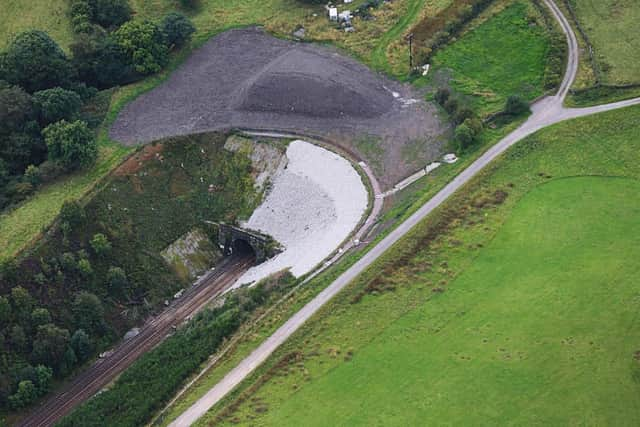

Advertisement
Hide AdAdvertisement
Hide AdFor the new pipes and water collecting devices to be installed, engineers built a temporary lift platform to work from using winches and pulleys.
Network Rail teams were lowered into the ventilation shaft in a custom-built cradle, similar to their Victorian predecessors who excavated the shaft 127 years before them.
Doing the work this way meant trains could still run in the tunnel below without disrupting passenger or freight services.
However, drainage improvements at track level could only take place on Saturday nights when trains were not running.
Advertisement
Hide AdAdvertisement
Hide AdThe Cowburn Tunnel has a rich history which dates back to the Victoria era.
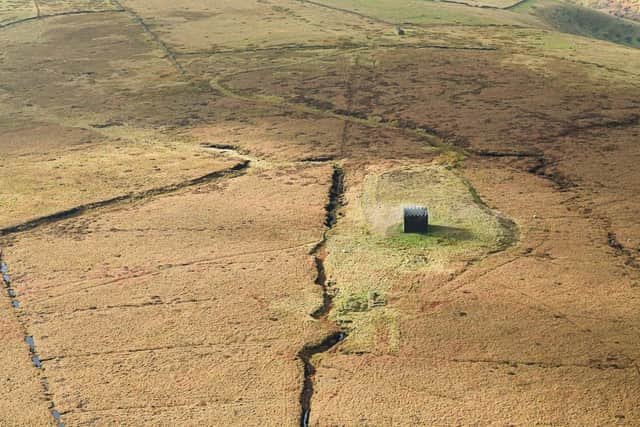

It was engineered by the Midland Railway between Kinder Scout and Rushup Edge.
Tunneling also started at the other end near Chapel-en-le-Frith and the breakthrough between the two sections was made on 18 July, 1891.
The shaft is 791 feet (241 m) deep and is one of the deepest railway ventilation shafts in the country.
Advertisement
Hide AdAdvertisement
Hide AdWork on that was a project in itself as men lived on the rough exposed moorlands to dig the shaft without any modern machinery and were lowered down using a winch mechanism.
The men working on the shaft did grueling eight hour shift digging it out before it was eventually completed on 16 March, 1896.
With a ceiling more than 10 metres high the chamber has become known as ‘the Cathedral’ because of its pristine stonework.
Although it is still a mystery to Network Rail teams today why such precision was used to build this chamber which is usually in the pitch black and rarely seen by anyone.
Advertisement
Hide AdAdvertisement
Hide AdIf it were a building the ventilation shaft would be taller than Canary Wharf in London.
Now it is owned and operated by Network Rail, which nationwide is responsible for 20,000 miles of track, 30,000 bridges, tunnels and viaducts and the thousands of signals, level crossings and stations and of course the Cowburn Tunnel.
The repair work started in August 2021 and finished last month as part of the £800,000 Great North Rail Project Investment which is a vast programme of improvements to transform train travel for customers in the North.
Speaking about the recently completed repair project at Cowburn Tunnel Chris Halpin from Network Rail said: “What this job shows is that even in the most remote of locations our engineers have got solutions to very complex engineering problems.
Advertisement
Hide AdAdvertisement
Hide Ad"It's been a real success – the investment has been around £800,000 and the work should hopefully secure this ventilation shaft on the Hope Valley line for many decades to come.”
This will protect the 127-year-old brickwork and reduce the risk of passengers and freight on the busy Hope Valley line from future delays caused by the water leaks.
Dennis added: “It’s a huge privilege to keep heritage structures like Cowburn Tunnel in good condition for rail passengers and freight and it’s amazing to see up close the quality of the Victorians’ workmanship."
